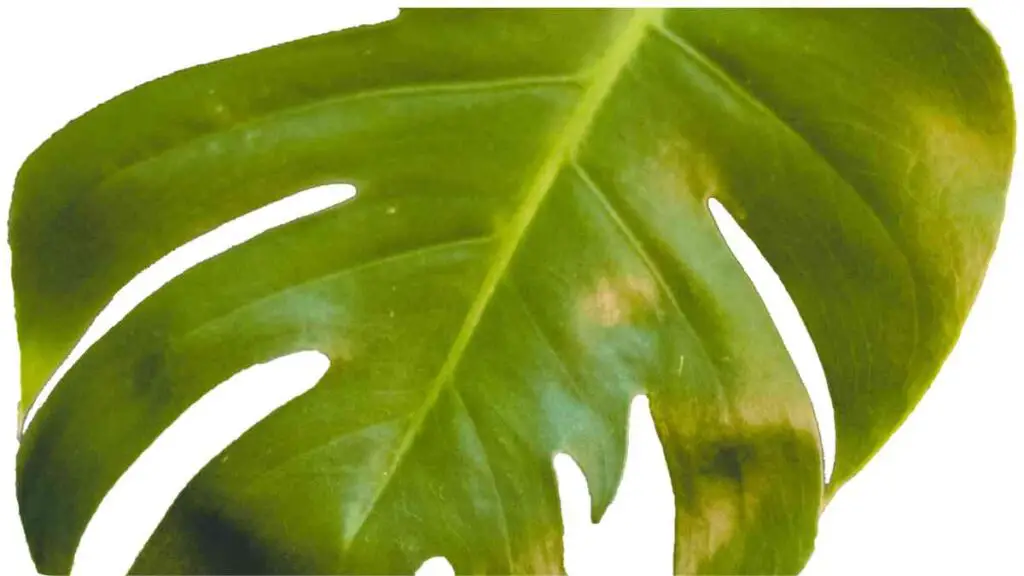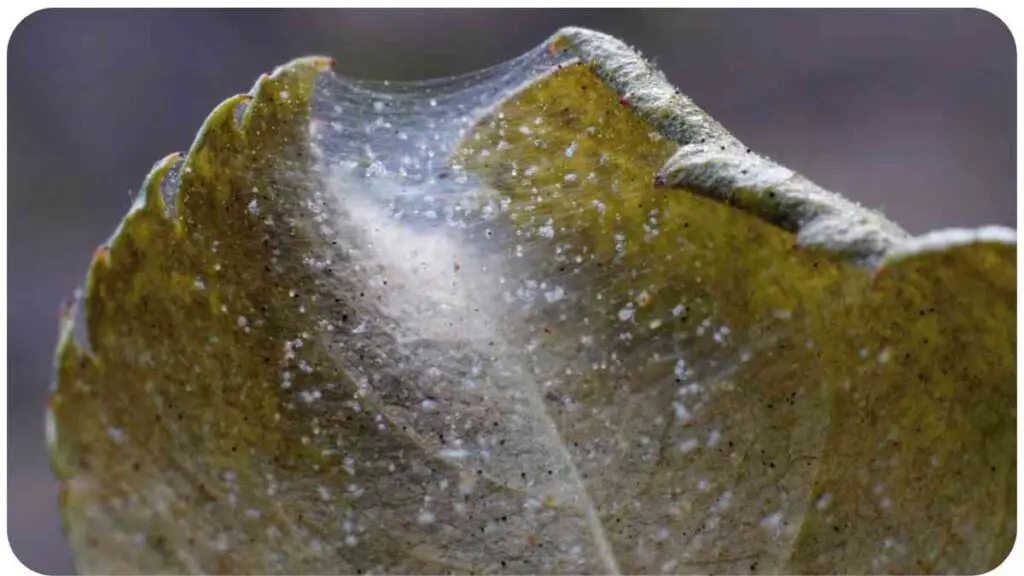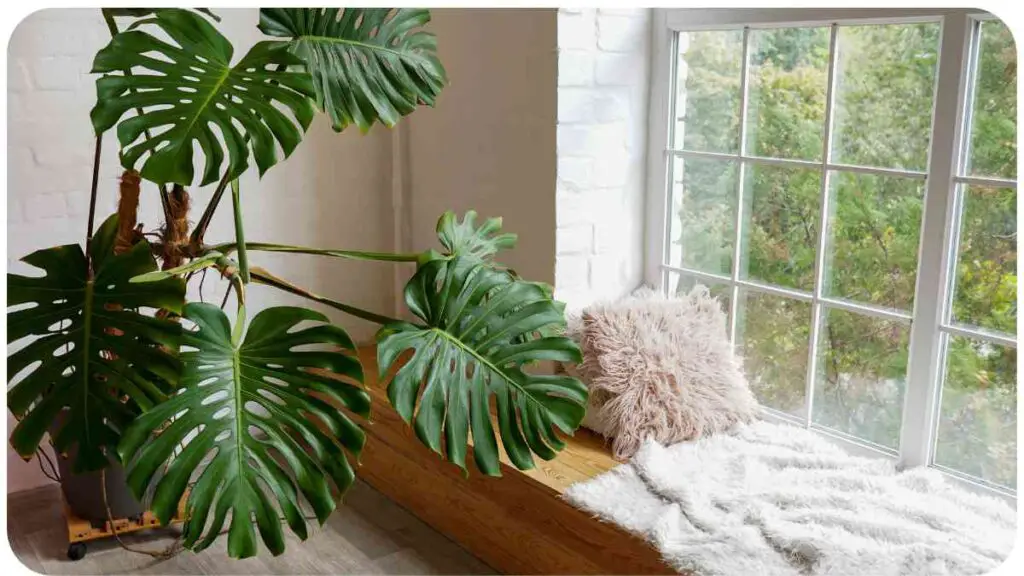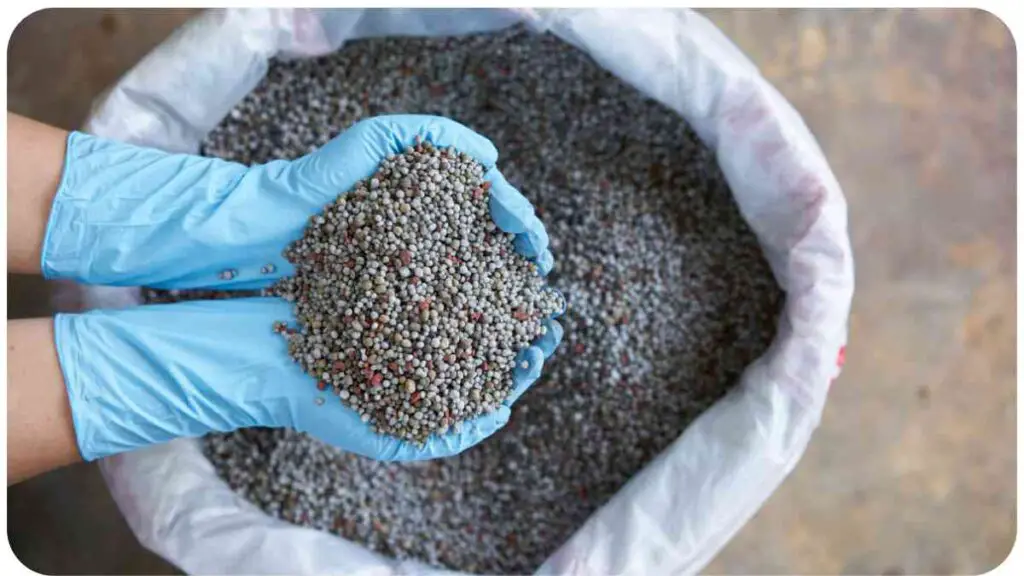Caring for your Monstera plant can be a rewarding experience, but it can also be perplexing when those once lush green leaves start turning brown. Don’t worry; you’re not alone in facing this challenge. In this comprehensive guide, we’ll delve into the various reasons your Monstera leaves might be browning and provide expert insights and solutions to help your plant thrive.
| Key Takeaways |
|---|
| 1. Brown leaves on Monstera can be caused by overwatering, poor lighting, pests, or diseases. |
| 2. Proper diagnosis of the issue is crucial for effective treatment. |
| 3. Regular maintenance, including pruning, checking for pests, and adjusting watering and lighting, can help prevent brown leaves. |
| 4. Propagation can be a solution for severely affected Monstera plants. |
| 5. Seek advice from experts and online communities for guidance on Monstera care. |
Understanding Your Monstera
Monstera Plant Overview
Before we dive into troubleshooting, let’s get to know the Monstera plant better. The Monstera deliciosa, often called the Swiss cheese plant, is a popular houseplant known for its unique fenestrated leaves. Its tropical origins mean it has specific care requirements.
If your orchids are wilting, don’t despair. With proper care, you can bring these elegant flowers back to life. Learn techniques and tips for Phalaenopsis lovers.
Common Causes of Brown Leaves

Brown leaves can be indicative of several issues. Understanding these causes is the first step toward nursing your Monstera back to health.
Common Causes of Brown Leaves Table
| Cause | Description |
| 1. Overwatering | Soil saturation leading to root rot. |
| 2. Underwatering | Insufficient moisture causing leaf stress. |
| 3. Poor Lighting | Inadequate light affects photosynthesis. |
| 4. Low Humidity | Dry air can lead to leaf browning. |
| 5. Pest Infestation | Pests like spider mites can damage leaves. |
| 6. Fungal Diseases | Fungi can cause brown spots and patches. |
| 7. Nutrient Deficiency | Lack of essential nutrients affects color. |
Evaluating Environmental Factors
Light Conditions
Proper lighting is crucial for your Monstera’s health. Insufficient or excessive light can both result in brown leaves. Let’s explore the ideal lighting conditions.
Discover how to combat pesticide burn in your garden by switching to organic remedies. Protect your plants naturally and ensure a healthy garden environment.
Light Conditions for Monstera
| Light Level | Description |
| 1. Bright Indirect Light | Ideal for Monstera. |
| 2. Low Light | May lead to slower growth. |
| 3. Direct Sunlight | Can scorch leaves. |
Watering Practices
Watering your Monstera correctly is vital. Brown leaves can signal problems with moisture. Let’s discuss proper watering techniques.
Watering Practices for Monstera
| Watering Tips | Description |
| 1. Soil Moisture | Check the soil’s moisture level before watering. |
| 2. Drainage | Ensure your pot has proper drainage. |
| 3. Water Quality | Use filtered or distilled water for best results. |
| 4. Watering Frequency | Adjust based on environmental factors. |
Common Causes of Brown Leaves Table
| Cause | Description |
| 1. Overwatering | Soil saturation leading to root rot. |
| 2. Underwatering | Insufficient moisture causing leaf stress. |
| 3. Poor Lighting | Inadequate light affects photosynthesis. |
| 4. Low Humidity | Dry air can lead to leaf browning. |
| 5. Pest Infestation | Pests like spider mites can damage leaves. |
| 6. Fungal Diseases | Fungi can cause brown spots and patches. |
| 7. Nutrient Deficiency | Lack of essential nutrients affects color. |
Diagnosing Pests and Diseases

Identifying Common Pests
Pest infestations can be a nightmare for your Monstera. Brown spots and discolored leaves are often signs of these unwanted visitors. Let’s identify and tackle some common pests.
Worried about black spots on your roses? Dive into the causes and find effective solutions for healthy blooms. Keep your roses vibrant and disease-free.
Common Monstera Pests Table
| Pest | Description |
| 1. Spider Mites | Tiny arachnids that suck plant juices. |
| 2. Mealybugs | Small, cottony insects that feed on sap. |
| 3. Aphids | Small, pear-shaped insects that cluster. |
| 4. Scale Insects | Hard-shelled insects that attach to leaves. |
| 5. Thrips | Tiny, slender insects that damage foliage. |
Recognizing Diseases
Monstera plants can also fall victim to diseases, which can manifest as brown, disfigured leaves. Let’s explore some common diseases and how to identify them.
Common Monstera Diseases Table
| Disease | Description |
| 1. Root Rot | Fungal infection causing root decay. |
| 2. Leaf Spot | Circular brown spots on leaves. |
| 3. Powdery Mildew | White, powdery substance on leaves. |
| 4. Bacterial Blight | Brown, water-soaked lesions on foliage. |
| 5. Leaf Curl | Leaves curling and turning brown. |
Pruning and Trimming Techniques

Pruning Brown Leaves
Once you’ve identified the cause of the browning, it’s time to take action. Pruning is a vital step to remove damaged foliage and promote new growth.
Why Are Your Daffodils Dying Early?” Learn how to troubleshoot and save your daffodil blooms with this step-by-step guide. Ensure your garden’s beauty.
Pruning Tips for Monstera
| Pruning Technique | Description |
| 1. Clean Tools | Use sharp, clean scissors or pruning shears. |
| 2. Trim Affected Parts | Remove brown, damaged leaves and stems. |
| 3. Cut at an Angle | Make clean cuts at a 45-degree angle. |
| 4. Promote Airflow | Trim overcrowded areas for better circulation. |
Promoting New Growth
Pruning is not just about cutting; it’s also about encouraging your Monstera to thrive. Learn how to promote new growth effectively.
Promoting New Growth in Monstera
| Growth Enhancement | Description |
| 1. Balanced Nutrition | Ensure your plant gets the right nutrients. |
| 2. Adequate Sunlight | Provide the ideal amount of light. |
| 3. Proper Watering | Keep the soil consistently moist, not soggy. |
| 4. Training and Support | Use stakes for support if needed. |
Light Conditions for Monstera
| Light Level | Description |
| 1. Bright Indirect Light | Ideal for Monstera. |
| 2. Low Light | May lead to slower growth. |
| 3. Direct Sunlight | Can scorch leaves. |
Soil and Fertilization
Soil Composition
Your Monstera’s soil plays a significant role in its overall health. Let’s explore the right soil composition for a thriving plant.
Ideal Soil Composition for Monstera
| Soil Component | Description |
| 1. Well-Draining Soil | Prevents waterlogging and root rot. |
| 2. Organic Matter | Provides essential nutrients. |
| 3. Aeration | Ensures proper root oxygenation. |
| 4. pH Level | Aim for a slightly acidic to neutral pH. |
Fertilizer Selection

Fertilizing your Monstera can be the key to vibrant, green leaves. However, choosing the right fertilizer is essential.
Fertilizer Recommendations for Monstera
| Fertilizer Type | Description |
| 1. Balanced Fertilizer | Contains equal proportions of NPK. |
| 2. Slow-Release Fertilizer | Provides nutrients over time. |
| 3. Organic Fertilizer | Derived from natural sources. |
| 4. Liquid Fertilizer | Quick nutrient absorption. |
Repotting Your Monstera
Choosing the Right Pot
As your Monstera grows, it may need a new home. Proper pot selection is essential for its well-being.
“How to Troubleshoot Brown Leaves on Your Monstera.” Follow this comprehensive guide to revive your Monstera plant’s health. Keep your Monstera thriving.
Pot Selection Guide for Monstera
| Pot Features | Description |
| 1. Adequate Size | Allow room for growth (2-4 inches larger). |
| 2. Drainage Holes | Prevents water accumulation in the pot. |
| 3. Quality Material | Choose durable materials (e.g., terracotta). |
| 4. Aesthetics | Match the pot to your decor. |
Transplanting Tips
Transplanting can be stressful for your Monstera. Learn how to minimize this stress and ensure a successful transition.
Transplanting Tips for Monstera
| Transplanting Advice | Description |
| 1. Timing | Spring or early summer is ideal. |
| 2. Gently Remove | Carefully remove the plant from its pot. |
| 3. Inspect Roots | Check for root health and trim if necessary. |
| 4. New Soil | Use fresh, well-draining soil in the new pot. |
| 5. Watering | Water lightly after transplanting. |
Pruning Tips for Monstera
| Pruning Technique | Description |
| 1. Clean Tools | Use sharp, clean scissors or pruning shears. |
| 2. Trim Affected Parts | Remove brown, damaged leaves and stems. |
| 3. Cut at an Angle | Make clean cuts at a 45-degree angle. |
| 4. Promote Airflow | Trim overcrowded areas for better circulation. |
5.2 Promoting New Growth
Pruning is not just about cutting; it’s also about encouraging your Monstera to thrive. Learn how to promote new growth effectively.
Promoting New Growth in Monstera
| Growth Enhancement | Description |
| 1. Balanced Nutrition | Ensure your plant gets the right nutrients. |
| 2. Adequate Sunlight | Provide the ideal amount of light. |
| 3. Proper Watering | Keep the soil consistently moist, not soggy. |
| 4. Training and Support | Use stakes for support if needed. |
Soil and Fertilization
Soil Composition
Your Monstera’s soil plays a significant role in its overall health. Let’s explore the right soil composition for a thriving plant.
Ideal Soil Composition for Monstera
| Soil Component | Description |
| 1. Well-Draining Soil | Prevents waterlogging and root rot. |
| 2. Organic Matter | Provides essential nutrients. |
| 3. Aeration | Ensures proper root oxygenation. |
| 4. pH Level | Aim for a slightly acidic to neutral pH. |
Fertilizer Selection
Fertilizing your Monstera can be the key to vibrant, green leaves. However, choosing the right fertilizer is essential.
Fertilizer Recommendations for Monstera
| Fertilizer Type | Description |
| 1. Balanced Fertilizer | Contains equal proportions of NPK. |
| 2. Slow-Release Fertilizer | Provides nutrients over time. |
| 3. Organic Fertilizer | Derived from natural sources. |
| 4. Liquid Fertilizer | Quick nutrient absorption. |
Repotting Your Monstera
Choosing the Right Pot
As your Monstera grows, it may need a new home. Proper pot selection is essential for its well-being.
Pot Selection Guide for Monstera
| Pot Features | Description |
| 1. Adequate Size | Allow room for growth (2-4 inches larger). |
| 2. Drainage Holes | Prevents water accumulation in the pot. |
| 3. Quality Material | Choose durable materials (e.g., terracotta). |
| 4. Aesthetics | Match the pot to your decor. |
Transplanting Tips
Transplanting can be stressful for your Monstera. Learn how to minimize this stress and ensure a successful transition.
Transplanting Tips for Monstera
| Transplanting Advice | Description |
| 1. Timing | Spring or early summer is ideal. |
| 2. Gently Remove | Carefully remove the plant from its pot. |
| 3. Inspect Roots | Check for root health and trim if necessary. |
| 4. New Soil | Use fresh, well-draining soil in the new pot. |
| 5. Watering | Water lightly after transplanting. |
Ideal Soil Composition for Monstera
| Soil Component | Description |
| 1. Well-Draining Soil | Prevents waterlogging and root rot. |
| 2. Organic Matter | Provides essential nutrients. |
| 3. Aeration | Ensures proper root oxygenation. |
| 4. pH Level | Aim for a slightly acidic to neutral pH. |
Fertilizer Selection
Fertilizing your Monstera can be the key to vibrant, green leaves. However, choosing the right fertilizer is essential.
Fertilizer Recommendations for Monstera
| Fertilizer Type | Description |
| 1. Balanced Fertilizer | Contains equal proportions of NPK. |
| 2. Slow-Release Fertilizer | Provides nutrients over time. |
| 3. Organic Fertilizer | Derived from natural sources. |
| 4. Liquid Fertilizer | Quick nutrient absorption. |
Repotting Your Monstera
Choosing the Right Pot
As your Monstera grows, it may need a new home. Proper pot selection is essential for its well-being.
Pot Selection Guide for Monstera
| Pot Features | Description |
| 1. Adequate Size | Allow room for growth (2-4 inches larger). |
| 2. Drainage Holes | Prevents water accumulation in the pot. |
| 3. Quality Material | Choose durable materials (e.g., terracotta). |
| 4. Aesthetics | Match the pot to your decor. |
Transplanting Tips
Transplanting can be stressful for your Monstera. Learn how to minimize this stress and ensure a successful transition.
Transplanting Tips for Monstera
| Transplanting Advice | Description |
| 1. Timing | Spring or early summer is ideal. |
| 2. Gently Remove | Carefully remove the plant from its pot. |
| 3. Inspect Roots | Check for root health and trim if necessary. |
| 4. New Soil | Use fresh, well-draining soil in the new pot. |
| 5. Watering | Water lightly after transplanting. |
Propagation for Recovery
Propagation Methods
Propagation can be a way to save your Monstera and give it a fresh start. Let’s explore the different methods.
Propagation Methods for Monstera
| Propagation Technique | Description |
| 1. Stem Cuttings | Snip healthy stems and root in water or soil. |
| 2. Air Layering | Encourage roots to grow while attached. |
| 3. Division | Split the plant into smaller sections. |
| 4. Leaf Cuttings | Grow new plants from single leaves. |
Timing and Care
Timing and care are crucial during the propagation process. Here’s how to ensure success.
Timing and Care for Monstera Propagation
| Propagation Stage | Description |
| 1. Healthy Parent | Choose a healthy parent plant for cuttings. |
| 2. Propagation Timing | Spring and early summer are optimal. |
| 3. Root Development | Monitor root growth before transplanting. |
| 4. Transitioning | Gradually acclimate to new conditions. |
Propagation Methods for Monstera
| Propagation Technique | Description |
| 1. Stem Cuttings | Snip healthy stems and root in water or soil. |
| 2. Air Layering | Encourage roots to grow while attached. |
| 3. Division | Split the plant into smaller sections. |
| 4. Leaf Cuttings | Grow new plants from single leaves. |
Timing and Care
Timing and care are crucial during the propagation process. Here’s how to ensure success.
Timing and Care for Monstera Propagation
| Propagation Stage | Description |
| 1. Healthy Parent | Choose a healthy parent plant for cuttings. |
| 2. Propagation Timing | Spring and early summer are optimal. |
| 3. Root Development | Monitor root growth before transplanting. |
| 4. Transitioning | Gradually acclimate to new conditions. |
Preventive Measures
Regular Maintenance
Preventing brown leaves is as important as treating them. Regular maintenance keeps your Monstera healthy.
Regular Maintenance Tips
| Maintenance Task | Description |
| 1. Dusting | Keep leaves clean to allow for better photosynthesis. |
| 2. Pruning | Trim yellowing or damaged leaves promptly. |
| 3. Pest Checks | Inspect for pests regularly. |
| 4. Nutrient Check | Ensure your plant gets the right nutrients. |
Avoiding Overwatering
Overwatering is a common mistake that can lead to brown leaves. Learn how to avoid it.
Tips to Avoid Overwatering
| Overwatering Prevention | Description |
| 1. Check Soil Moisture | Use your finger to assess soil moisture. |
| 2. Proper Pot Drainage | Ensure pots have drainage holes. |
| 3. Adjust Watering Schedule | Tailor watering to your environment. |
Regular Maintenance Tips
| Maintenance Task | Description |
| 1. Dusting | Keep leaves clean to allow for better photosynthesis. |
| 2. Pruning | Trim yellowing or damaged leaves promptly. |
| 3. Pest Checks | Inspect for pests regularly. |
| 4. Nutrient Check | Ensure your plant gets the right nutrients. |
Avoiding Overwatering
Overwatering is a common mistake that can lead to brown leaves. Learn how to avoid it.
Tips to Avoid Overwatering
| Overwatering Prevention | Description |
| 1. Check Soil Moisture | Use your finger to assess soil moisture. |
| 2. Proper Pot Drainage | Ensure pots have drainage holes. |
| 3. Adjust Watering Schedule | Tailor watering to your environment. |
Seek Professional Help
If all else fails and your Monstera’s brown leaves persist, it’s time to seek expert advice. Don’t hesitate to consult with a professional or join a plant community for guidance.
Success Stories: Personal Experiences
My Monstera Journey
Let me share my personal journey with Monstera care, including challenges and triumphs. Learning from others’ experiences can be valuable.
Overcoming Challenges
I’ll also recount some of the common challenges Monstera enthusiasts face and how they’ve successfully revived their plants.
Tips from Monstera Enthusiasts
Online Communities
Joining online Monstera enthusiast communities can be a goldmine of tips and tricks. Learn from others who have been through the brown-leaf phase.
Conclusion
In conclusion, brown leaves on your Monstera can be a distressing sight, but they are not a death sentence for your beloved plant. By understanding the causes, implementing the troubleshooting steps, and maintaining proper care, you can revive your Monstera and enjoy its lush, green foliage once more.
Further Reading
- Common Monstera Problems: Explore a detailed guide on common issues your Monstera might face and how to solve them.
- Monstera Leaf Troubleshooting: Find expert insights into troubleshooting Monstera leaf problems, with tips for a healthier plant.
- Monstera Brown Leaves: Learn about Monstera brown leaves and discover effective strategies to address this issue and maintain the beauty of your plant.
FAQs
Why do Monstera leaves turn brown?
Monstera leaves can turn brown due to overwatering, poor lighting, pests, or diseases. Identifying the underlying cause is essential for effective treatment.
How can I prevent brown leaves on my Monstera?
Prevent brown leaves by maintaining proper watering, ensuring adequate lighting, and regularly inspecting your plant for pests and diseases.
Should I prune brown leaves immediately?
Yes, pruning brown leaves is essential to prevent further damage and promote new growth. Use clean, sharp tools for the best results.
Can I save my Monstera if most of its leaves are brown?
Saving a Monstera with mostly brown leaves can be challenging, but it’s possible. Focus on identifying the root cause, providing optimal care, and considering propagation.
What should I do if my Monstera has brown spots on its leaves?
Brown spots on Monstera leaves can be a sign of various issues. Check for pests, diseases, or irregular watering, and take appropriate action to address the problem.

I am Hellen James, a landscape architect. For many years I have written about landscaping for various publications; however, recently decided to focus my writing on personal experience as a profession.

